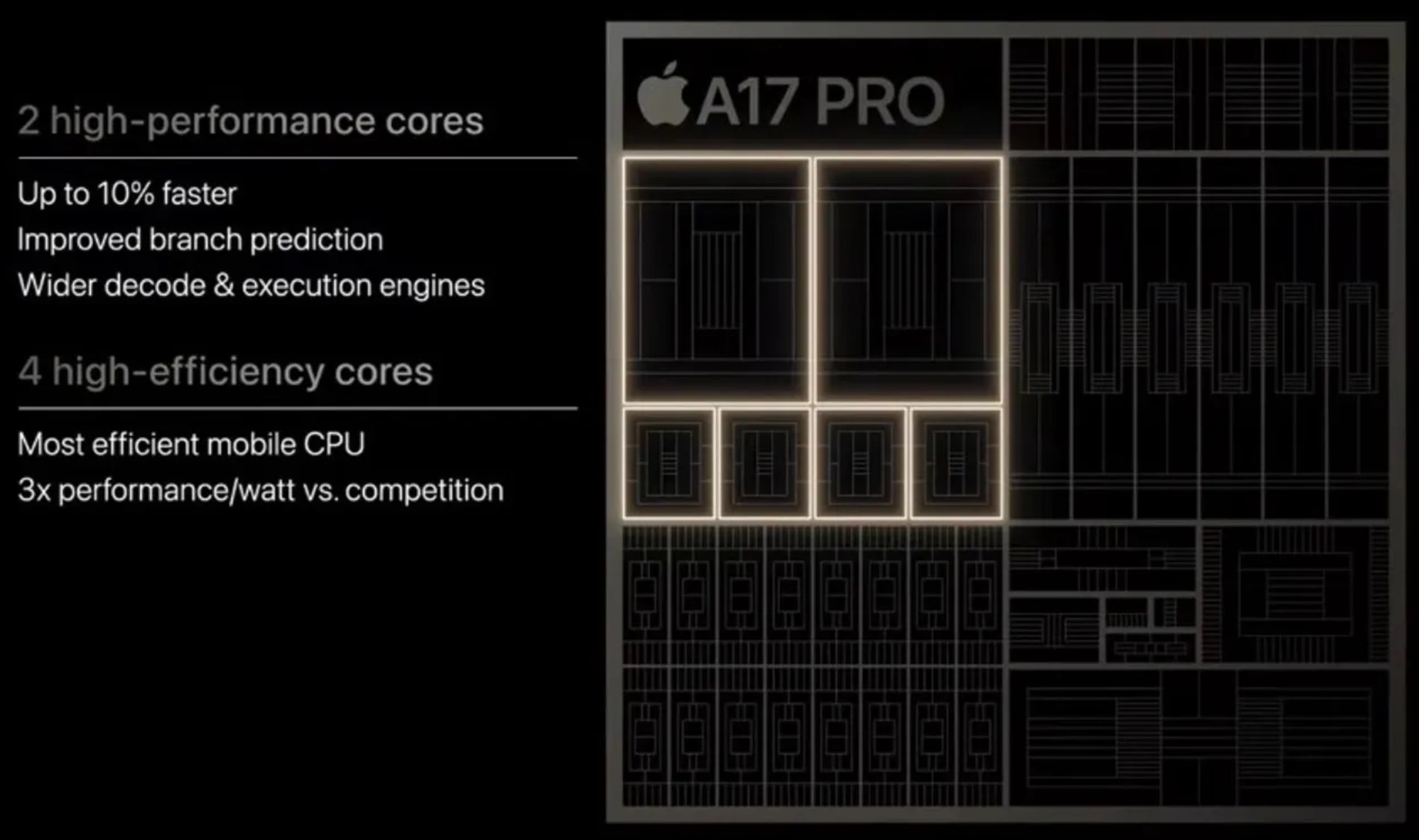The A17 Pro is a landmark moment for Apple
Apple scores a huge victory with the A17 Pro, and Android chip vendors don't have an answer just yet.

Apple just introduced the iPhone 15 Pro series, and while the biggest talking point is the switch to USB-C charging in lieu of the Lightning port, the hardware that's powering the devices is just as groundbreaking. The iPhone 15 Pro and 15 Pro Max models feature the A17 Pro, a brand-new platform that's built on the 3nm node.
What immediately stands out is the change in naming, with the A17 eschewing the standard Bionic naming convention of its predecessors. There are several reasons for this, but the fact that it's built on a new manufacturing node is a key contributor. The iPhone 14 Pro's A16 Bionic used a 4nm node, and switching to 3nm offers sizeable gains in efficiency and performance.
Now, Android chip vendors like Qualcomm and MediaTek were able to keep up with Apple in terms of the manufacturing node — the Snapdragon 8 Gen 2 leverages the same 4nm tech as the A16 Bionic — but that won't be the case next year's best Android phones. Apple is said to have an exclusive contract with TSMC — the foundry where the A17 Pro is actually manufactured — over its 3nm node, and as a result, all other mobile chip vendors will have to use the existing 4nm node.

Apple has a unique relationship with Taiwan-based TSMC; it has used the foundry to manufacture its chipsets for nearly a decade now, and it accounts for 23% of TSMC's overall revenues, more than any other brand. TSMC, meanwhile, stands to benefit from the large orders that inevitably come its way, with the foundry estimated to produce 85 million chipsets just for the iPhone 15 Pro and Pro Max this year.
In fact, TSMC values its partnership with Apple to such an extent that it is allegedly writing off the cost of defective silicon. When a foundry starts mass producing on a new node, yields are lower than usual — 70 to 80% versus 99% for an established node — and these costs are passed on directly to the vendors, who pay for the entire wafer, regardless of whether a few dies on that wafer are defective. With the 3nm node, TSMC isn't charging Apple for any defective silicon, and that undoubtedly has significant cost savings for the iPhone manufacturer.
While Apple and TSMC haven't publicly said anything about an exclusive arrangement, there are enough hints that it is the case. MediaTek announced earlier in the month that it designed its first mobile SoC based on TSMC's 3nm node, but it won't go into mass production until the second half of 2024. Similarly, Qualcomm is slated to switch to 3nm in 2025, with next year's Snapdragon platform using the same 4nm node.

The A16 Bionic was already one of the fastest mobile chipsets in the market — particularly at single-core workloads — and with the move to 3nm, the A17 Pro extends that lead considerably. Apple touted a 10% increase in performance over the A16 Bionic, along with significant gains when it comes to efficiency. Another area where there's a noticeable uptick is the GPU, which has a notable performance increase of 20% over last year. The new 16-core neural engine is 2x faster, and the A17 Pro has a dedicated AV1 decoder.
Combine all of that and exclusive access to the next-gen 3nm node, and the iPhone 15 Pro and 15 Pro Max are virtually unchallenged on the hardware front.

With USB-C charging and brand-new silicon that's among the fastest of any phone today, the iPhone 15 Pro includes the upgrades you care about.
Get the latest news from Android Central, your trusted companion in the world of Android

Harish Jonnalagadda is Android Central's Senior Editor overseeing mobile coverage. In his current role, he leads the site's coverage of Chinese phone brands, networking products, and AV gear. He has been testing phones for over a decade, and has extensive experience in mobile hardware and the global semiconductor industry. Contact him on Twitter at @chunkynerd.
